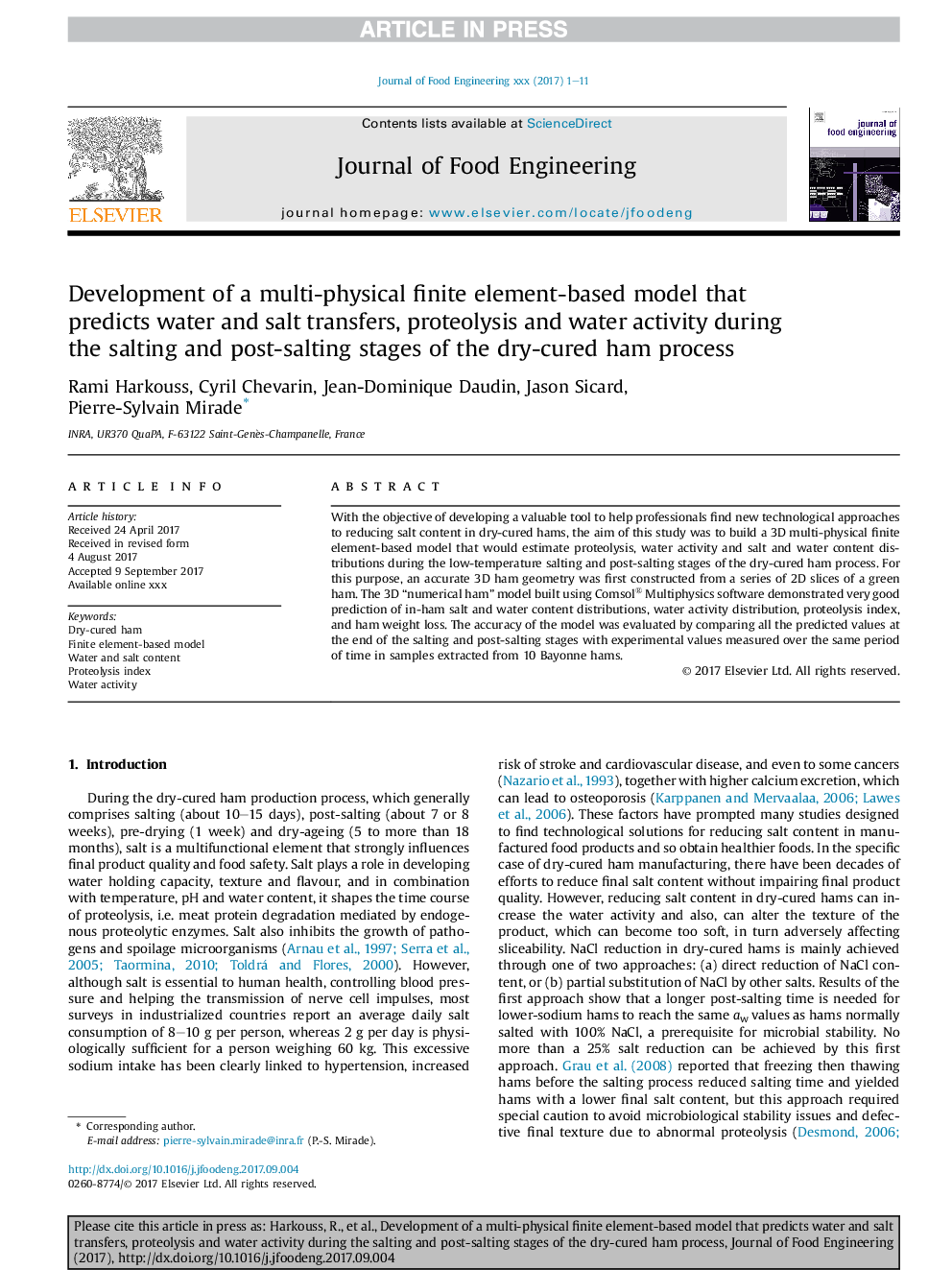| Article ID | Journal | Published Year | Pages | File Type |
|---|---|---|---|---|
| 4908771 | Journal of Food Engineering | 2018 | 11 Pages |
Abstract
With the objective of developing a valuable tool to help professionals find new technological approaches to reducing salt content in dry-cured hams, the aim of this study was to build a 3D multi-physical finite element-based model that would estimate proteolysis, water activity and salt and water content distributions during the low-temperature salting and post-salting stages of the dry-cured ham process. For this purpose, an accurate 3D ham geometry was first constructed from a series of 2D slices of a green ham. The 3D “numerical ham” model built using Comsol® Multiphysics software demonstrated very good prediction of in-ham salt and water content distributions, water activity distribution, proteolysis index, and ham weight loss. The accuracy of the model was evaluated by comparing all the predicted values at the end of the salting and post-salting stages with experimental values measured over the same period of time in samples extracted from 10 Bayonne hams.
Related Topics
Physical Sciences and Engineering
Chemical Engineering
Chemical Engineering (General)
Authors
Rami Harkouss, Cyril Chevarin, Jean-Dominique Daudin, Jason Sicard, Pierre-Sylvain Mirade,
